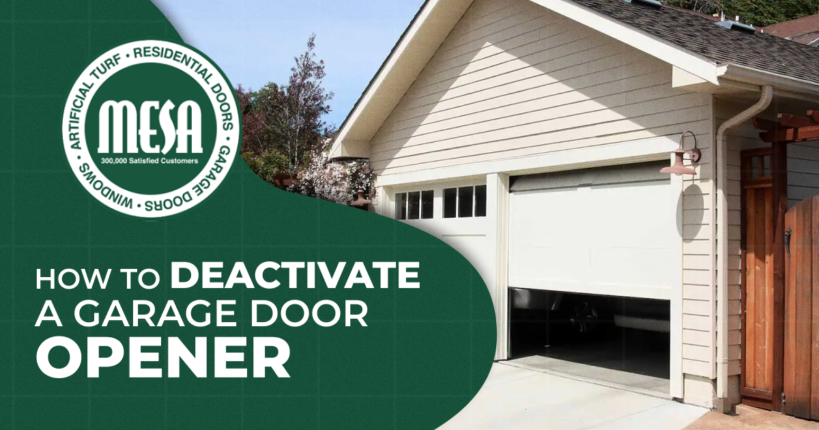How to Deactivate a Garage Door Opener
Did you know you can disconnect your garage door opener from the garage door? It can be done in just a few simple steps. First, we’ll look at why you’d want to know how to deactivate a garage door opener in the first place. Some of the reasons for it include:
- You’re going away on vacation
- You plan to be away from home for a while
- The power has gone out
- A storm has disrupted the local power grid
- The garage door isn’t working properly
Why Should I Deactivate My Garage Door Opener?
This is a question many homeowners overlook. But if you’re away from home or not, many things can happen that affect your garage door.
A power surge can damage the transmitter. As a result, the door could open on its own. Thieves can manipulate exterior keypads; they can also find a garage door remote, especially if you left one in a car parked nearby (disconnecting the opener prevents them from operating it). Or, if the electricity has gone out, you can disconnect the opener and open or close the garage door manually to access your car.
How to Disconnect Your Garage Door Opener
Triggering the manual override for your garage door requires just a few simple steps and can be done relatively quickly. To do so:
- Make Sure the Door Is Fully Closed: It’s easiest to disconnect the garage door opener when the door is closed. This is also the safest way to deactivate the opener system.
- Pull the Emergency Release Handle: Most garage doors have a release handle that hangs from a red rope. Pull on the handle firmly, as it’s designed to be operated with intent. You should hear an audible snap or click as the trolley release arm moves to a vertical position.
- Operate the Garage Door: The garage door opener will be deactivated once the release handle has been pulled. You should be able to easily open or close the garage door (if not, it may have a faulty spring and require immediate repair).
If you’ve deactivated the garage door opener before going away, install a padlock on the track or use a sliding bolt. These will prevent forced entry. But be sure to remove the padlock or push back the bolt before using the garage door again. Otherwise, it could be severely damaged.
How to Reconnect the Garage Door Opener
Reactivating it is similar to how to deactivate the garage door opener. Whether you’ve returned home or the power was restored, simply pull on the emergency release handle again. Then press the garage door opener remote button. The trolley should move back to its original position and reconnect with the door. Depending on the model, the garage door may need to be lifted manually for the trolley to reconnect.
If you’re uncertain about how to use the emergency release handle or operate your garage door manually, review the system’s manual. Call a professional if you’re still uncertain or are unable to deactivate the garage door opener or reconnect it.
Contact Mesa Garage Doors
If you discover any issues when you deactivate the garage door opener, such as the door feeling too heavy or being difficult to move, we can help. Our experienced technicians can quickly repair garage door springs, cables, and tracks, as well as garage door panels and garage door openers. To receive a free repair estimate and schedule garage door repair in Los Angeles, Orange, Ventura, Riverside, or San Bernardino County, call (714) 844-5741 today.





